"About the Red Panda." Red Panda Network. Retrieved on March 20, 2014.
- Available at: http://redpandanetwork.org/red_panda/about-the-red-panda/
"Ailurus fulgens." Animal Info & Endangered Animals. Ythanbank, Ellon, Aberdeenshire: Scott Jones. Retrieved on March 20, 2014.
- Available at: http://www.animalinfo.org/species/carnivor/ailufulg.htm
"Ailurus fulgens: F.G. Cuvier 1825, Taxonomic Serial Number 621846. ITIS Report. Integrated Taxonomic Information System. Retrieved on March 20, 2014.
- Available at: http://www.itis.gov/servlet/SingleRpt/SingleRpt?search_topic=TSN&search_value=621846
Antón, Mauricio; Salesa, Manuel J.; Pastor, Juan F.; Peigné, Stéphane; and Morales, Jorge. December 2006. "Implications of the Functional Anatomy of the Hand and Forearm of Ailurus fulgens (Carnivora, Ailuridae) for the Evolution of the ‘False-thumb’ in Pandas." Journal of Anatomy 209(6):757–764. Retrieved on March 20, 2014.
- Available at: http://www.ncbi.nlm.nih.gov/pmc/articles/PMC2049003/
Barnett, Lindsay. 1 July 2009. “Your Morning Adorable: Styan’s Red Panda Cub at Canada’s Edmonton Valley Zoo.” Los Angeles Times Local: L.A. Unleashed, All Things Animal in Southern California and Beyond. Retrieved on March 20, 2014.
- Available at: http://latimesblogs.latimes.com/unleashed/2009/07/styans-red-panda-cub-at-canadas-edmonton-valley-zoo.html
CalPhotos. 2012. "Parailurus." University of California Museum of Paleontology. Berkeley: Regents of the University of California. Retrieved on March 20, 2014.
- Available via Biodiversity Sciences Technology group (BSCIT) at: http://calphotos.berkeley.edu/cgi/img_query?enlarge=0000+0000+0509+0728
- Available via Biodiversity Sciences Technology group (BSCIT) at: http://calphotos.berkeley.edu/cgi/img_query?seq_num=282129&one=T
Duff, Andrew; and Lawson, Ann. 2004. Mammals of the World: A Checklist. Yale University Press.
Fisher, Rebecca E.; Adrian, Brent; Elrod, Clay; and Hicks, Michelle. November 2008. “The Phylogeny of the Red Panda (Ailurus fulgens): Evidence from the Hindlimb.” Journal of Anatomy 213(5):607-628. Retrieved on March 20, 2014.
- Available at: http://www.ncbi.nlm.nih.gov/pmc/articles/PMC2667555/
Friends of the Rosamond Gifford Zoo Education Volunteers. 12 August 2005. "Red Panda." Rosamond Gifford Zoo at Burnet Park. Retrieved on March 20, 2014.
- Available at: http://www.rosamondgiffordzoo.org/assets/uploads/animals/pdf/RedPanda.pdf
Heath, Terrell; and Platnick, Josh. 2008. "Ailurus fulgens: Red Panda (On-line)." Animal Diversity Web. University of Michigan Museum of Zoology. Retrieved on March 20, 2014.
- Available at: http://animaldiversity.ummz.umich.edu/site/accounts/information/Ailurus_fulgens.html
Long, Barney; and Lohani, Shubash. "Species: Red Panda." Retrieved on March 20, 2014.
- Available at: http://worldwildlife.org/species/red-panda
MacClintock, Dorcas. 1988. Red Pandas: A Natural History. NY: Charles Scribner's Sons for Young Readers.
Naish, Darren. 5 April 2008. "The Once Mighty Red Panda Empire." ScienceBlogs: Tetrapod Zoology. Retrieved on March 20, 2014.
- Available at: http://scienceblogs.com/tetrapodzoology/2008/04/05/red-panda-empire/
"Nepalese Red Panda." Perth Zoo: Asian Rainforest Animals. The Government of Western Australia. Retrieved on March 20, 2014.
- Available at: http://www.perthzoo.wa.gov.au/animals-plants/asia/rainforest/nepalese-red-panda/
Nowak, Ronald M. 1999. Walker's Mammals of the World, Sixth Edition. Volume I. Baltimore: Johns Hopkins University Press.
“Parailurus: Schlosser 1899 (Red Panda).” Fossilworks. Retrieved on March 20, 2014.
- Available at: http://fossilworks.org/bridge.pl?a=taxonInfo&taxon_no=41258
"Red Panda." BBC Nature: Wildlife Mammals. Retrieved on March 20, 2014.
- Available at: http://www.bbc.co.uk/nature/life/Red_Panda
"Red Panda." Smithsonian National Zoological Park. Retrieved on March 20, 2014.
- Available at: http://nationalzoo.si.edu/Animals/AsiaTrail/RedPanda/factsheet.cfm
"Red Panda." San Diego Zoo Animals: Mammals. Retrieved on March 20, 2014.
- Available at: http://animals.sandiegozoo.org/animals/red-panda
"Red Panda (Ailurus fulgens)." ARKive. Retrieved on March 20, 2014.
- Available at: http://www.arkive.org/red-panda/ailurus-fulgens/
"Red Panda (Ailurus fulgens)." Birmingham Nature Centre Animals. Retrieved on March 20, 2014.
- Available at: http://www.birmingham.gov.uk/cs/Satellite?c=Page&childpagename=SystemAdmin%2FCFPageLayout&cid=1223092737539&packedargs=website%3D4&pagename=BCC%2FCommon%2FWrapper%2FCFWrapper&rendermode=live
"Red Panda (Ailurus fulgens)." Encyclopedia of Life. Retrieved on March 20, 2014.
- Available at: http://eol.org/pages/327984/hierarchy_entries/51376818/details
"Red Panda: Ailurus fulgens." P. 315 in Grzimek's Animal Life Encyclopedia, Second Edition. Volume 14: Mammals III, edited by Michael Hutchins, Devra G. Kleiman, Valerius Geist, and Melissa C. McDade. Farmington Hills, MI: Gale Group, Inc., division of Thomson Learning Inc., 2004.
"Red Panda (Ailurus fulgens)." The Big Zoo. Retrieved on March 20, 2014.
- Available at: http://www.thebigzoo.com/Animals/Red_Panda.asp
Roberts, Miles S.; and Gittleman, John L. 1984. "Ailurus fulgens." Mammalian Species 222:1–8.
Simpson, B., M.D. "Note on Ailurus fulgens." Proceedings of the Scientific Meetings of the Zoological Society of London for the Year 1869 (November 11, 1869): 507.
- Available via Biodiversity Heritage Library at: http://biodiversitylibrary.org/page/28663442
Tedford, Richard H.; and Gustafson, Edward P. 17 February 1977. “First North American Record of the Extinct Panda Parailurus.” Nature 265:621-623.
Wallace, Steven C.; and Wang, Xiaoming. 30 September 2004. "Two New Carnivores from an Unusual Late Tertiary Forest Biota in Eastern North America." Nature 431(7008):556–559
Wang, X.; Choudhury, A.; Yonzon, P.; Wozencraft, C.; and Than Zaw. 2008. Ailurus fulgens. In: IUCN 2013. International Union for Conservation of Nature and Natural Resources Red List of Threatened Species. Version 2013.2. Retrieved on March 20, 2014.
- Available at: http://www.iucnredlist.org/details/714/0
Wilson, Don E.; and Reeder, DeeAnn M. 2005. Mammal Species of the World: A Taxonomic and Geographic Reference, Third Edition. Johns Hopkins University Press.
"WT-20, Red Panda." Prairie Fire Pottery Wild Tracks. Retrieved on March 20, 2014.
- Available at: https://www.prairiefirepottery.com/shopping_cart/details.asp?ID=67
Zhang, Zejun; Hu, Jinchu; Yang, Jiandong; Li, Ming; and Wei, Fuwen. 2009. “Food Habits and Space-use of Red Pandas Ailurus fulgens in the Fengtongzhai Nature Reserve, China: Food Effects and Behavioural Responses.” Acta Theriologica 54(3):225-234.


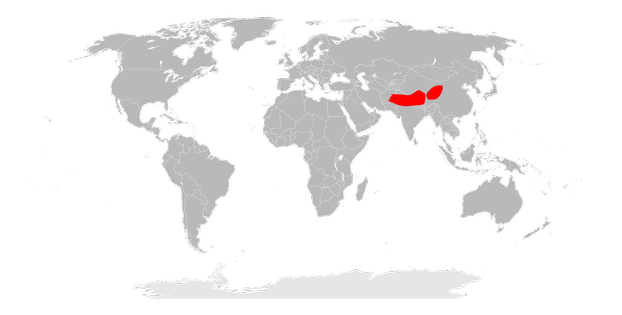

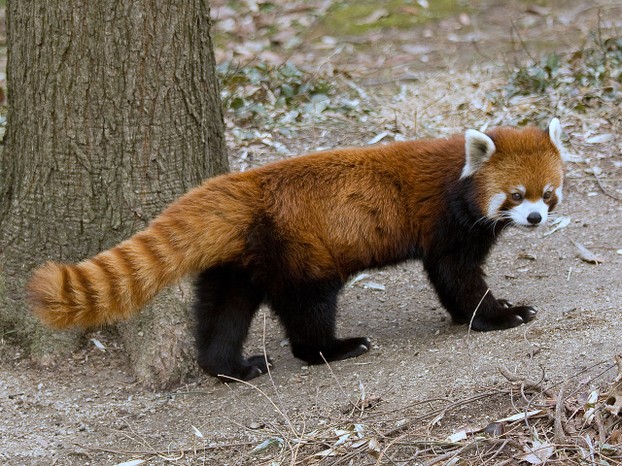
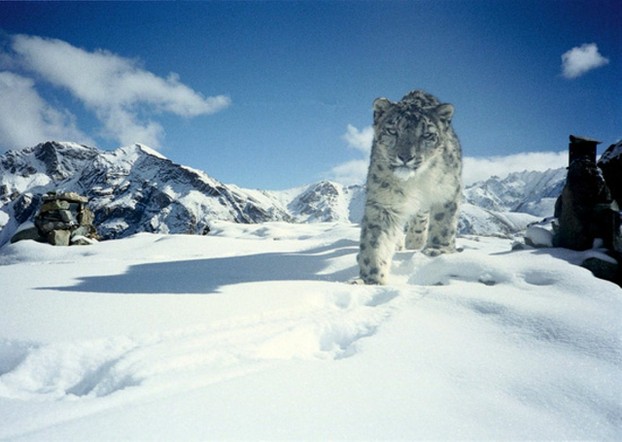
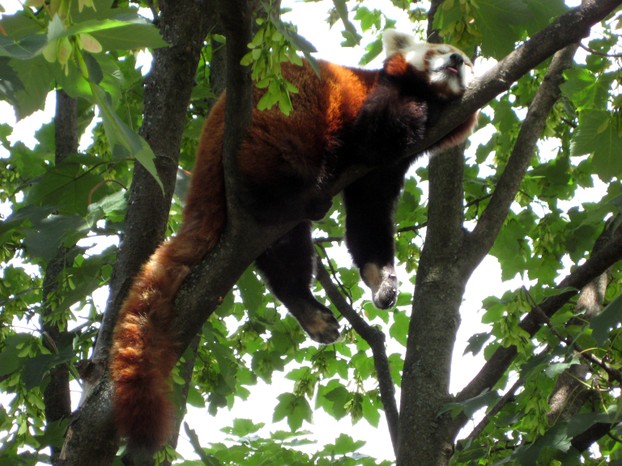

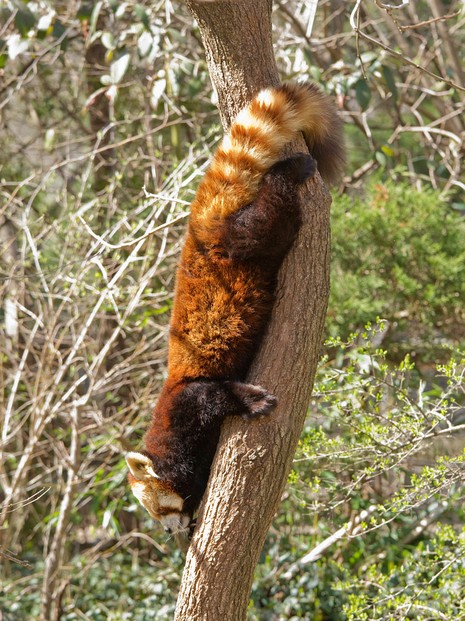
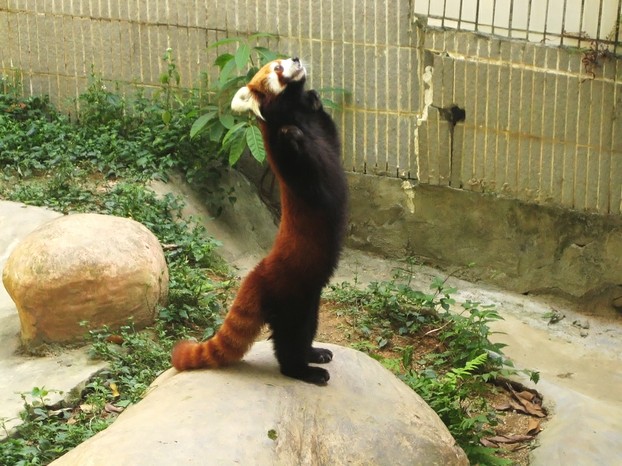
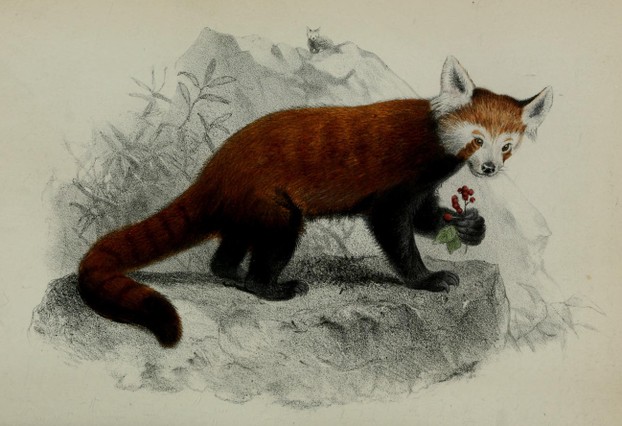
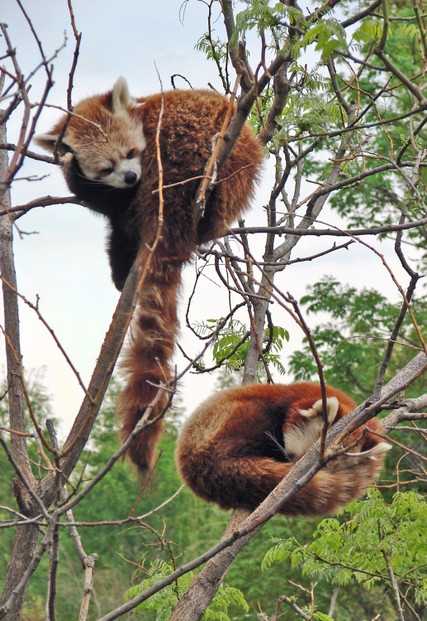
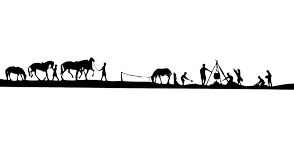



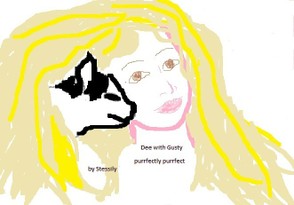
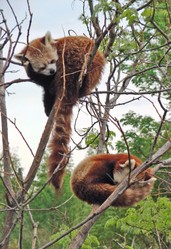

 Are Hawaiian Huakai Po Nightmarchers Avenging Halloween Thursday?on 10/02/2024
Are Hawaiian Huakai Po Nightmarchers Avenging Halloween Thursday?on 10/02/2024
 Mailing Addresses for 2023 Form 4868 Extending 1040 and 1040SR April 15, 2024, Due Dateon 04/15/2024
Mailing Addresses for 2023 Form 4868 Extending 1040 and 1040SR April 15, 2024, Due Dateon 04/15/2024
 Mailing Addresses for 2023 Forms 1040 and 1040SR Filed in 2024on 04/15/2024
Mailing Addresses for 2023 Forms 1040 and 1040SR Filed in 2024on 04/15/2024
 Mailing Addresses for 2022 Form 4868 Extending 1040 and 1040SR April 18, 2023, Due Dateon 04/13/2023
Mailing Addresses for 2022 Form 4868 Extending 1040 and 1040SR April 18, 2023, Due Dateon 04/13/2023

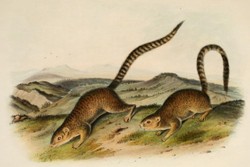
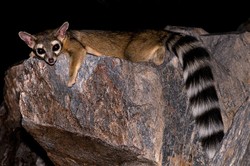
Comments
For those wondering about the illustration of the ringtail panda by Dutch zoological illustrator Joseph Smit (this post's 10th image):
The depiction by Joseph Smit (July 18, 1836-Nov. 4, 1929) appears opposite page 507 as an illustration for "5. Note on Ailurus fulgens" by B. Simpson, M.D., published in the Nov. 11, 1869, issue of Proceedings of the Scientific Meetings of the Zoological Society of London for the Year 1869.
https://www.biodiversitylibrary.org/i... https://www.biodiversitylibrary.org/p... https://zslpublications.onlinelibrary...
Smit based his illustration of Ailurus fulgens on a depiction by German natural history artist Joseph Wolf (Jan. 22, 1820-April 20, 1899), according to a footnote by Philip Lutley Sclater (Nov. 4, 1829-June 27, 1913), English lawyer, zoologist and Secretary of the Zoological Society of London (1860-1902):
"The figure is taken from Mr. Wolf's drawing of the individual brought home by Dr. Simpson, and now living in the Society's Gardens (Nov. 11th). -- P. L. S." https://www.biodiversitylibrary.org/i...
https://archive.org/details/biostor-1...
https://zslpublications.onlinelibrary...
MBC, Me, too, I love cats and pandas, so I also see red pandas as representing a visually attractive blend of both.
These little ones are so darling! I love cats and I love pandas so this one is everything I like!
Mira, Me, too, I agree: these ringtail pandas are so very very cute!
I'm glad that you appreciate the photos, including that of the ringtail panda's predator, the snow leopard, which is a beautiful creature.
I'm happy to acquaint you with these ringtails.
These ringtail pandas are so cute! I love the photos you included, including that of a snow leopard. Nature can be amazing. I've never known about these pandas :-)